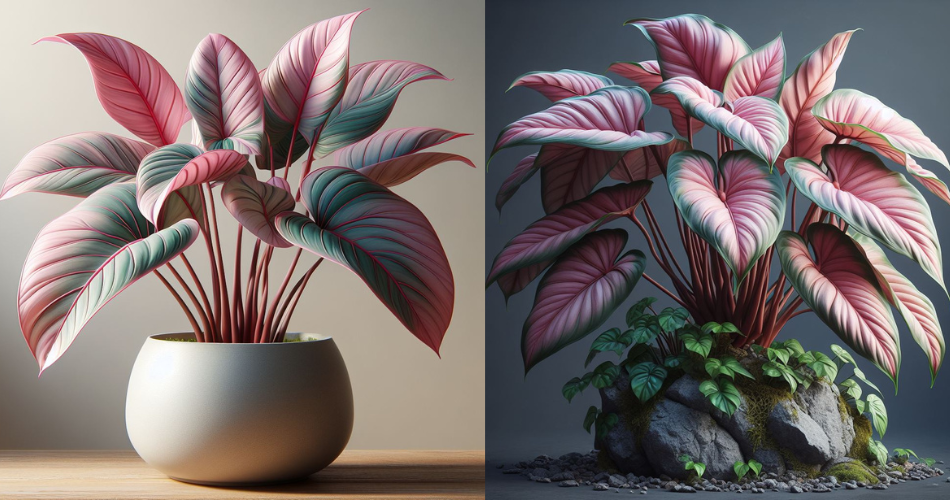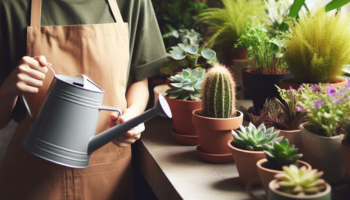
Philodendron Pink Princess, known for its stunning foliage with splashes of pink, is a popular and sought-after houseplant among plant enthusiasts. As a hybrid of the Philodendron genus, this unique and visually striking plant has captured the attention of many with its vibrant colors and elegant leaves. In this comprehensive guide, we will explore everything you need to know about caring for Philodendron Pink Princess, from understanding its growth requirements and essential care tips to propagation techniques and troubleshooting common issues. Whether you are a seasoned plant enthusiast or a beginner looking to cultivate this beautiful plant, this guide will provide you with valuable insights and knowledge to ensure the successful care and growth of your Philodendron Pink Princess.
1. Introduction to Philodendron Pink Princess
• Overview of Philodendron Pink Princess
The Philodendron Pink Princess is a stunning tropical plant known for its unique foliage. Its leaves are a mix of dark green and vibrant pink, creating a striking contrast that adds a touch of elegance to any space. This philodendron variety has gained popularity among plant enthusiasts for its beauty and relatively easy care.
• History and Background
The Philodendron Pink Princess is a hybrid plant that was first discovered in the 1970s in a breeding program in Florida. It is a result of crossbreeding different philodendron species to create a beautiful and visually captivating plant. Since its introduction, it has become a favorite choice for many indoor plant lovers due to its stunning aesthetics.
2. Understanding the Growth Requirements of Philodendron Pink Princess
• Light Requirements
Philodendron Pink Princess thrives in bright, indirect light. It prefers a well-lit spot, but direct sunlight can scorch its delicate foliage. Place it near a window with filtered sunlight or in a room with bright, indirect light for optimal growth.
• Temperature and Humidity Needs
This philodendron variety prefers temperatures between 65°F and 80°F (18°C – 27°C). It can tolerate slightly cooler temperatures but doesn’t do well in extreme cold. In terms of humidity, it appreciates higher levels. You can increase humidity by misting the leaves or placing a tray of water near the plant.
• Soil and Potting Requirements
Philodendron Pink Princess thrives in well-draining soil that retains some moisture. A mixture of potting soil, perlite, and peat moss works well. Make sure the pot has drainage holes to prevent waterlogging, as excessive moisture can lead to root rot.
• Watering and Drainage
When it comes to watering, it’s best to allow the top inch of soil to dry out before watering again. Overwatering can cause root rot, while underwatering can lead to stunted growth. Aim for a balance and adjust watering frequency based on the plant’s needs and environmental conditions.
3. Essential Care Tips for Philodendron Pink Princess
• Pruning and Maintenance
Regular pruning helps maintain the Pink Princess’ vibrant appearance and encourages bushier growth. Trim any leggy or yellowing stems to promote new growth. Additionally, remove any dead or damaged leaves for a tidy and healthy appearance.
• Fertilization and Feeding
Feed your Philodendron Pink Princess with a balanced liquid fertilizer during the growing season (spring and summer). Dilute the fertilizer according to the package instructions and apply it every 2-4 weeks. It’s important not to overfeed, as excessive nutrients can damage the plant.
• Training and Support
As your Pink Princess grows, you may need to provide some support to help it climb. You can use stakes or a trellis to guide its growth and maintain its upright form. Gentle tying with soft plant ties can also help secure any wayward stems.
• Pest and Disease Management
Philodendron Pink Princess is generally resilient to pests and diseases. However, it can occasionally encounter issues such as spider mites or mealybugs. Regularly inspect your plant for signs of pests and treat them promptly using organic insecticidal soap or neem oil.
4. Propagation Techniques for Philodendron Pink Princess
• Propagating via Stem Cuttings
One popular method of propagating Philodendron Pink Princess is through stem cuttings. Take a healthy stem with at least one node and place it in a jar of water or directly in moist soil. Keep it in a warm and bright spot, and roots should start to develop within a few weeks.
• Propagating via Node Division
Another way to propagate your Pink Princess is by dividing the plant at the nodes. Carefully separate a healthy side shoot with its own roots and plant it in a separate pot with well-draining soil. Water it gently and provide the same care as the parent plant.
• Propagating via Air Layering
Air layering is a slightly more advanced propagation technique. Select a healthy stem and make a small incision below a node. Wrap moist sphagnum moss around the incision and cover it with plastic wrap. After a few weeks, roots will form, and you can detach the new plant and pot it separately.
Remember, caring for your Philodendron Pink Princess involves giving it the right conditions, regular maintenance, and spreading the love. Enjoy watching it grow and flourish in your home!
5. Troubleshooting Common Issues with Philodendron Pink Princess
• Yellowing or Browning Leaves
Is your Philodendron Pink Princess looking a little less than pretty with its yellow or brown leaves? Don’t worry, it’s not a sign that you’re a plant parent failure (we’ve all been there). Typically, yellowing or browning leaves can be caused by overwatering, underwatering, or even inconsistent watering. Check the moisture level of the soil and adjust your watering routine accordingly. Remember, it’s better to underwater than overwater your Pink Princess.
• Leaf Spotting or Diseases
Nobody likes a spotted Philodendron Pink Princess – it’s like a bad case of plant acne. Leaf spotting can be caused by various issues including fungal or bacterial infections, pests, or even excessive humidity. To tackle this problem, remove any affected leaves and ensure good air circulation around your plant. If the issue persists, you may need to treat your Pink Princess with an appropriate fungicide or insecticide.
• Overwatering and Root Rot
Ah, the classic plant parent mistake – overwatering. Philodendron Pink Princess is no exception to the perils of excessive water. Overwatering can lead to root rot, a condition where the roots become mushy, brown, and smelly. To avoid this, always allow the top inch or so of the soil to dry out before watering again. And remember, Pink Princess prefers slightly moist soil, not soggy bottoms!
• Pests and Infestations
Every plant has its share of unwanted visitors, and Philodendron Pink Princess is no exception. Common pests that may bug your Pink Princess include spider mites, aphids, and mealybugs. Don’t fret! You can combat these critters with natural or chemical pest control methods. Keep an eye out for any signs of infestation like webbing, tiny insects, or sticky residue on the leaves, and take action before they throw a garden party.
6. Enhancing the Aesthetic Appeal of Philodendron Pink Princess
• Creative Display and Arrangement Ideas
Ready to show off your Pink Princess in style? Get creative with your plant display and arrangement. Consider placing it in a decorative pot or hanging it in a macrame hanger. Pair it with other plants of different heights and textures for a visually appealing green corner in your home.
• Using Philodendron Pink Princess in Terrariums
Take your Pink Princess to the next level by incorporating it into a terrarium. This enclosed space provides a controlled environment with higher humidity levels, which the Pink Princess absolutely loves. Just make sure to choose a terrarium with good ventilation to prevent excessive moisture buildup.
• Companion Planting and Pairing
Pink Princess thrives in the company of other plants. Consider pairing it with plants that have contrasting leaf shapes or colors, such as pothos or calathea. This will create a dynamic and eye-catching display that will make your Pink Princess feel right at home.
7. Creating the Ideal Environment for Philodendron Pink Princess
• Indoor vs. Outdoor Growing
Deciding whether to keep your Pink Princess indoors or let it bask in the great outdoors depends on your climate and personal preference. Generally, Pink Princess is well-suited to indoor environments where you can control the temperature and humidity. But, if you live in a warm and humid climate, you can try growing it outdoors in a shady spot.
• Providing Adequate Space and Support
As Pink Princess grows, it will appreciate some breathing room and support. Make sure to give it a pot that allows for root expansion and choose a sturdy and decorative stake or trellis to support its climbing tendencies. It’s like giving your Pink Princess her own personal fitness trainer!
• Controlling Light and Temperature
Pink Princess enjoys bright, indirect light. That means she likes to bask in the glow of natural sunlight, but not to the point where it scorches her delicate leaves. Avoid placing her in direct sunlight, as it can cause leaf burn. As for temperature, Pink Princess prefers a warm and cozy environment, ideally between 65-80°F (18-26°C).
• Humidity Control and Misting
Pink Princess is a bit of a drama queen when it comes to humidity. She loves a humid environment but doesn’t want to be misted too often. You can increase humidity by placing a tray filled with water near her or using a humidifier. However, be cautious with misting, as it can lead to leaf spotting or diseases if done excessively. Remember, Pink Princess prefers a balanced relationship with humidity – not too dry, not too moist.
8. Frequently Asked Questions about Philodendron Pink Princess Care
• How fast does Philodendron Pink Princess grow?
The growth rate of Philodendron Pink Princess can vary depending on various factors such as light, temperature, and overall care. On average, Pink Princess tends to grow at a moderate pace, producing new leaves every few weeks or months. However, it’s important to note that individual plant growth can differ, so don’t be disheartened if yours isn’t growing as fast as your neighbor’s. Just like people, plants have their own unique personalities and timelines.In conclusion, Philodendron Pink Princess is a captivating and rewarding plant to care for. By providing the right conditions, regular maintenance, and proper attention, you can enjoy the beauty and vibrancy of this unique houseplant. With the information and tips shared in this ultimate guide, you are now equipped with the knowledge to nurture your Philodendron Pink Princess and watch it thrive. So go ahead, embrace the joy of cultivating this stunning plant, and create a vibrant and enchanting atmosphere in your space. Happy gardening!
8. Frequently Asked Questions about Philodendron Pink Princess Care
1. How fast does Philodendron Pink Princess grow?
Philodendron Pink Princess is known for its relatively slow growth rate compared to other philodendron varieties. Under optimal conditions, it can grow a few inches per year. Patience is key when it comes to the growth of this plant.
2. Can Philodendron Pink Princess tolerate low light conditions?
While Philodendron Pink Princess prefers bright indirect light, it can tolerate lower light conditions to some extent. However, insufficient light may hinder its growth and result in less vibrant foliage. It is best to provide it with bright, indirect light for optimal growth and coloration.
3. How often should I fertilize my Philodendron Pink Princess?
During the growing season, which typically spans from spring to summer, it is recommended to fertilize your Philodendron Pink Princess every 4-6 weeks using a balanced houseplant fertilizer. Reduce or cease fertilization during the dormant period in winter.
4. What should I do if my Philodendron Pink Princess leaves start to turn yellow?
Yellowing leaves can indicate various issues, such as overwatering, nutrient deficiencies, or improper light conditions. Check the moisture levels of the soil, adjust watering frequency accordingly, ensure adequate light, and consider fertilizing if necessary. If the problem persists, evaluate other potential causes such as pest infestations or root rot.







